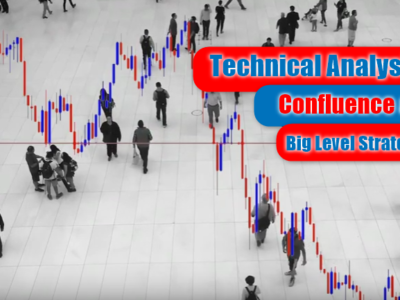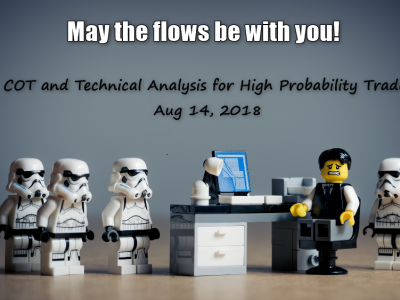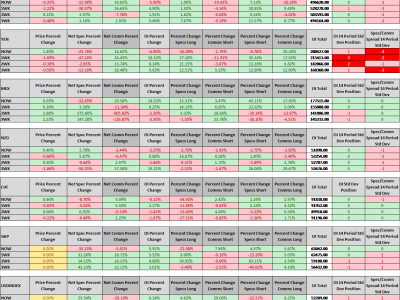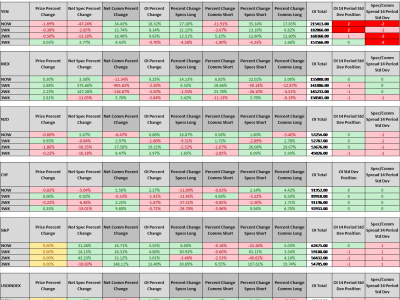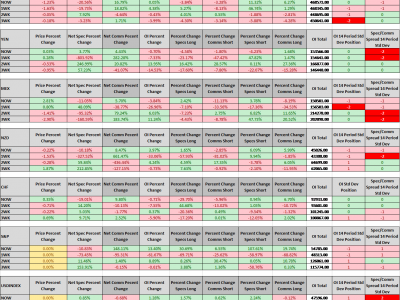
As you should already know, trading psychology is paramount to successful trading. One of the biggest test’s to a trader’s psychological resilience is their ability to successfully cope with changes in equity. Whether it is the ability to be mentally unscathed by a losing trade, a losing day, week or month, or having the patience to stick to your trading plan as you are painfully watching a drawdown build in your account.
Larger trade sizes result in larger swings in equity. Through experience, a trader determine slowly eek out their comfort zone for these equity swings. That sweet spot will be based on the drawdown your system incurs and your personal psychology/risk tolerance. When we deviate from this comfort zone the increased pressure often results in trading mistakes so performance suffers.
If you want to progress at this profession, most traders will have to venture out of their comfort zone by increasing their own capital at risk or perhaps even the capital of others. This article will present some novel ways of applying trading software to help scale our trading while minimizing the psychological impact to prevent performance slippage.
Minimizing the Psychological Impact of Increasing Trading Capital

Consider a trader who is now profitable and interested in increasing their account size. Perhaps they were trading a $500 account and they now believe they are ready to invest some of their savings and will increase their trading capital to $5000.
For some, the leap will not be a problem; for most however, the increased risk is psychologically challenging and will likely lead to issues with their trading. Knowing there is more on the line – more to lose – adds pressure. Watching a 10 percent drawdown on a $500 account was within their comfort zone but observing that same drawdown on a $5000 account is not.
This increased pressure results in deviations from their normal trading patterns and is fairly common when trading is scaled. Many panic and deviate from their systems perhaps by closing trades too early only to see the trade later become profitable. Some become more cautious and reduce the frequency or the size of their trades. In sum, performance suffers and the results they achieved on smaller accounts are not scaleable to larger accounts.
One method to minimize psychological burden to avoid these performance pitfalls is by allowing the trader to continue to trade the account size they have become comfortable with by segregating the additional capital in separate accounts – this can be easily done using copy software.
For example, many brokers offer a PAMM or MAM account. These acronyms stand for “Percent Allocation Management Module” and “Multi Account Manager”, which are essentially both fancy names for in house trade copying software. The manager trades a master account and those trades are copied on a relative basis (per lot size), to slave accounts. This allows for the same risk per trade to be transferred to the clients account no matter what size it is. That is, the software does the scaling for you.
These accounts are typically reserved for money managers but some brokerages may allow you to create a “personal” PAMM which can help you safely scale your trading. Through this structure you can trade a master account that is the same size you are used to trading. You place orders with the same lot sizes you are used to placing. You experience the same drawdowns you are used to seeing. You are operating in the exact same risk environment you have become comfortable with; however, you have increased your account size by opening a slave account which holds the bulk of your capital.
The slave account will operate behind the scenes and you won’t be exposed to the larger orders and drawdowns that are occurring in that account. Sure, in the back of your mind you will know that there is more on the line but by disconnecting from the increased capital at risk a huge burden will be lifted. Without this added pressure you significantly increase the probability of not succumbing to the common psychological errors that are typically made when increased capital is on the line.
These psychological errors that result from exiting your comfort zone via changes in your account size can also be experienced for many other reasons. For example, you may want to scale your risk to increase your returns. Or perhaps your trading is suffering as a number of recent losses has lowered your confidence and as a result you’ve deviated from your system. The next section offers another applied-software method to address these circumstances.
Applying Risk Profiles to Your Slaves
To address performance issues based on psychological slips from other circumstances it is possible to create slave accounts with varying amounts of capital (as described above) yet those accounts can also be assigned different risk profiles.

For example, you could have one account that increases the size of the trades originally placed in the master by 3x, another allocation increasing it by 2x, or even slave accounts that have decreased risk from the master. Thus, in essence you can continue to trade your master account with your existing strategy and risk profile while behind the scenes you are tweaking the risk exposure of your entire account.
Why would you want to do this?
Similar to increasing your trading capital without increasing your psychological burden, this structure will allow you to change your risk exposure while you continue to trade your current strategy (and lot sizes).
Some examples of how this might be applied include:
You began trading your small account with a conservative risk per trade of 0.3%. You’ve analysed your system’s performance and know your system could tolerate 0.9% risked per trade while keeping your drawdown under 20%. So you open a slave account and assign it a 3x risk multiplier. This way you continue to trade your system as you have always done thereby easing the psychological transition. Your account will experience the new risks but you won’t be exposed to the 3x increased drawdowns limiting the potential for trading errors from increased psychological pressures.
Or, perhaps you’ve had a losing streak and your confidence is shattered. You don’t want to change your system and would like to keep placing trades at the same size and frequency so you simply scale back the risk amount that is being applied to your capital and as a result gain the confidence to continue to operate as you normally would. Once you’re back in the groove and your system is performing as expected, you increase the risk amount to your capital.
Maybe you are operating an EA or a strategy that performs better during certain cycles or periods of risk appetite so you adjust your risk accordingly during those periods.
Perhaps you’ve been trading too aggressively lately and have been having troubles altering your behavior. During this time, as a precaution, you can dampen the amount of risk applied to your capital.
Or maybe you’ve made some adjustments to your strategy and although they’ve been extensively back and forward tested, you decide to decrease your risk exposure for a trial period of time during live trading.
And so on. It can simply be thought of as a risk toggle to apply more or less risk to your capital without having to make any adjustments to your systems strategy. No changes in lot sizes, no changes in frequency of trades etc…
Creating Your Strategy’s Risk Allocated Portfolio
You could even take it a step further and create your strategy’s own Risk Allocated Portfolio.

Say you have a $5000 account. You could expose:
20 percent ($1000) to high risk 3x exposure;
20 percent ($1000) to medium risk 2x exposure;
50 percent ($2500) to your standard risk 1x exposure;
and 10 percent ($500) at a reduced risk -1x exposure
Through this approach you can allocate various risks to different amounts of capital for the same trading account. Certainly you could also trade a $5000 account and adjust each lot size accordingly to reflect the overall exposure of the account to achieve a similar result; however you wouldn’t gain the psychological scaling benefits described in this post, not to mention that it would be an arithmetic nightmare; especially if you execute trades frequently and with varying lot sizes. This solution is far more slick.
RESOURCES
If this type of approach is appealing to you and are interested in applying it there are a couple different methods.
To Scale your Account (but not your risk)
Copying Software
You could use copy software on your own computer to sink MT4 accounts with varying amounts of your capital. Depending on the software often these accounts could be from different brokers and operate very similarly to the brokerages in house PAMM or MAM software. You do, however, have to host all the MT4 platforms on your own computer so if you are using an EA on a VPS, it will require significant resources. You will be able to allocate the risk proportionately between “master” and “slave” accounts but you won’t be able to assign different risk multipliers to those accounts. FX Blue provides free copying software and you can check it out HERE.
PAMM/MAM Brokerages
There are many brokers that offer MAM/PAMM software and you’d have to enquire whether they offer “Personal” PAMM accounts or whether they reserve the technology for their money manager clients. The benefits are that all accounts are hosted on the brokers servers so slippage is minimised. Housing all accounts under one broker is also a more convenient solution as transferring funds between accounts and other administrative “house keeping” is relatively straightforward. Most PAMM accounts however don’t allow for allocating different risk multipliers between accounts.
To Scale your Account and Your Risk
Mirror Trading
Instead of running multiple MT4 platforms on your computer (or VPS), there is the option to remotely copy trades across computers and brokers. FX Blue also offers this free service and it is done by opening an account with them and running software on the host computer and “receiver” software on the slave accounts. These software installs can be on accounts with different brokers and opposed to the copy software described above, in this instance one could change the risk profiles of each account – either inflating or deflating the risk. One drawback which should be considered is potential slippage based on execution speeds of different servers and spreads of the brokerages. You can check out FX Blue’s mirror trading HERE.
Full Brokerage Solution
Some brokerages offer all the advantages of a PAMM described above but also have the opportunity to allocate different risk amounts to the slave accounts. The only broker I’m aware of that currently offers this is Mt Cook Financial (send me an email if you know of others). One excellent feature is that they execute the trades of all the accounts as one block ECN order so there is no slippage between accounts. You can check out Mt Cook HERE.


